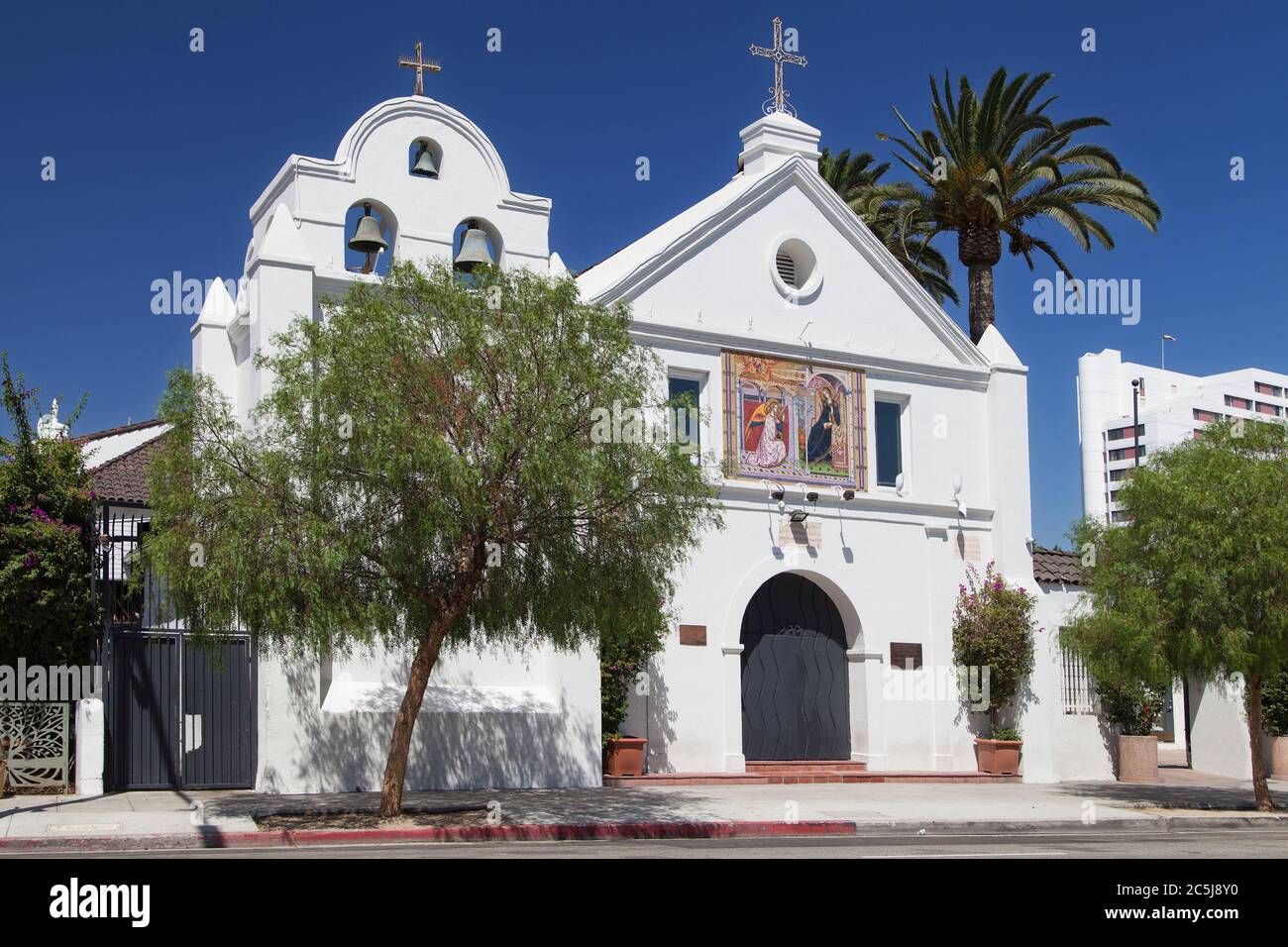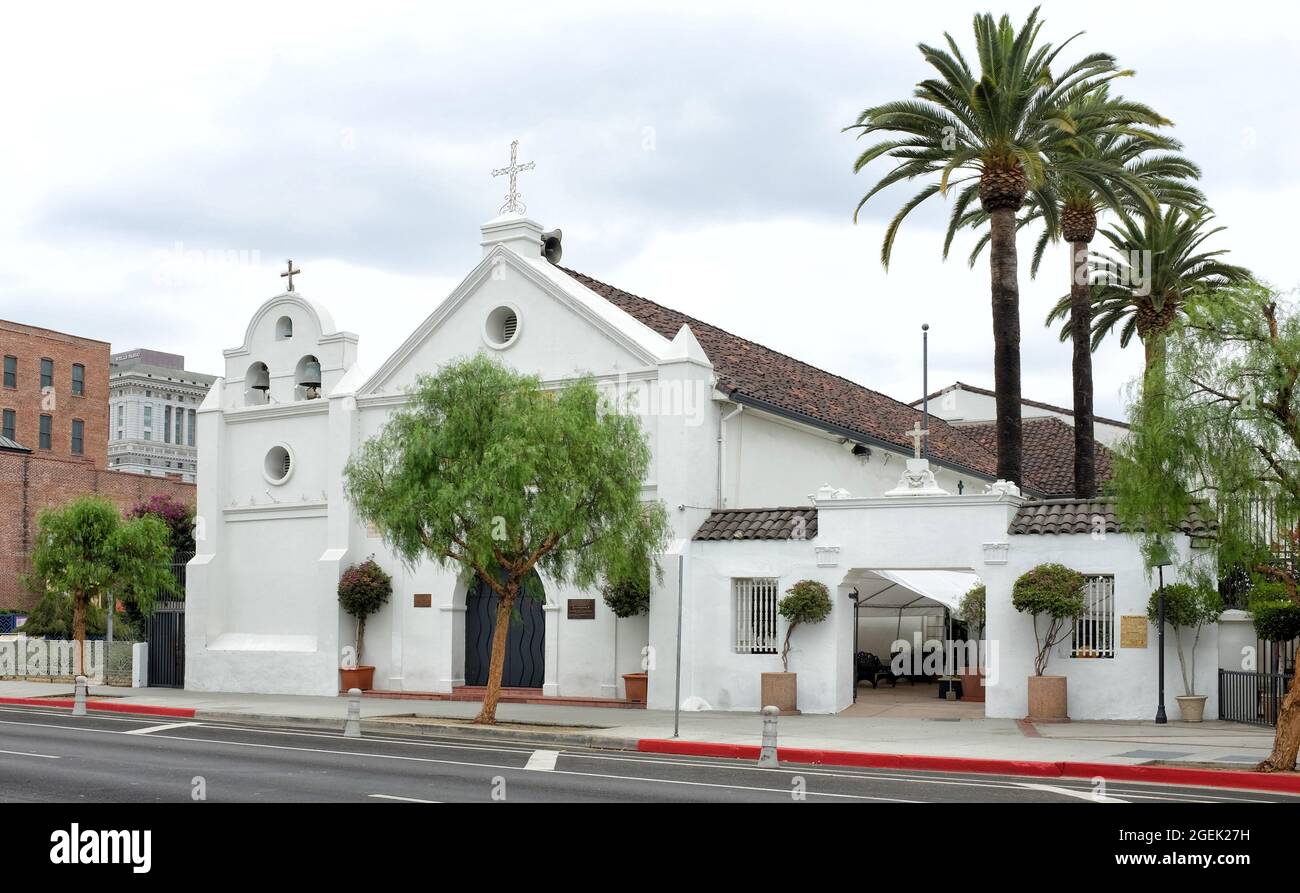The Heart Of LA's Heritage: La Placita Olvera Church
Table of Contents
- A Glimpse into Los Angeles' Spiritual Cradle
- The Genesis of Our Lady Queen of Angels
- Architectural Grandeur and Enduring Faith
- La Placita Olvera: More Than Just a Church
- The Church's Enduring Legacy in Modern LA
- Visiting La Placita: A Journey Through Time
- Preserving a Priceless Heritage
- Beyond the Altar: The Church's Role in Community Life
A Glimpse into Los Angeles' Spiritual Cradle
The story of Los Angeles cannot be told without acknowledging the central role of its earliest spiritual institutions. The **Iglesia Placita Olvera Los Angeles** stands as the oldest Catholic church in the city, a fact that often surprises newcomers. Founded in 1822, it is situated right in the heart of downtown, marking a pivotal point in the city's development. Its very existence harks back to a time when Los Angeles was merely "El Pueblo," a nascent settlement established by Spanish *popladores* – the 44 settlers who founded Los Angeles in 1781. A cross at one end of Olvera Street still marks the city's beginnings, a silent sentinel to its foundational narrative.What "Iglesia" Truly Means
The term "iglesia" itself carries profound meaning, especially in the context of Christianity. In English, it translates directly to "church," but its deeper significance, particularly within the Catholic tradition, is multifaceted. As the provided data suggests, "in Christianity, the church is understood as a spiritual community that brings together the faithful who profess the same doctrine, celebrate the same sacraments, and follow a..." common path. It's not just a building; it's a living body of believers. "La iglesia traduce el cristianismo en un cristianismo real," meaning "the church translates Christianity into real Christianity." Without the church, "el evangelio sería como cualquier libro o como una plastilina en donde cada quien modelaría su propio cristianismo," suggesting that the gospel would be like any other book or like clay, where everyone would mold their own version of Christianity. This emphasizes the church's vital role in preserving and transmitting doctrine, ensuring a unified and authentic expression of faith. The **Iglesia Placita Olvera Los Angeles** embodies this very essence, having served as the spiritual anchor for generations of Angelenos.The Genesis of Our Lady Queen of Angels
The origins of La Placita Church are deeply intertwined with the very birth of Los Angeles. Historical accounts indicate that the church, officially named La Iglesia de Nuestra Señora la Reina de los Ángeles (the Church of Our Lady the Queen of the Angels), was consecrated on December 8, 1822. This date solidified its status as the first Catholic temple in the city, making it the oldest church in Los Angeles. While the exact founding date of the original structure is sometimes cited as 1814, it was subsequently reformed, leading to its official consecration in 1822. It was operated by the Discalced Carmelites, a testament to the deep spiritual roots brought by the Spanish colonizers.From Humble Beginnings to a Sacred Landmark
The establishment of the church followed the initial settlement of Los Angeles. The city itself has its origins after 11 Spanish families (44 people in total) founded the city of Los Angeles. This occurred on September 4, 1781. As the community grew, so did the need for a formal place of worship. The original structure of the church was quite modest, a reflection of the nascent pueblo. Interestingly, the data mentions that "the original structure included two commercial businesses on the main street," highlighting the integrated nature of early community life where sacred and secular spaces often coexisted. Over time, as Los Angeles expanded, the church underwent various transformations and renovations, solidifying its presence and importance. Until 2002, due to its antiquity, the **Iglesia Placita Olvera Los Angeles** served as the principal church for the Archdiocese, underscoring its historical and administrative significance within the Catholic hierarchy of Southern California.Architectural Grandeur and Enduring Faith
Despite its humble beginnings, the **Iglesia Placita Olvera Los Angeles** has evolved into a structure of considerable architectural beauty, reflecting various periods of renovation and stylistic influences. While it may not boast the grand scale of European cathedrals, its charm lies in its historical authenticity and the stories embedded within its walls. A notable feature is "the gilded altar of the church," a photograph of which, taken by William Henry Jackson between 1890 and 1900, captures its timeless beauty. This gilded altar serves as a focal point, drawing the eye and emphasizing the sacred space it defines. The church's architecture reflects a blend of Spanish colonial and later Californian influences, characterized by its sturdy construction, often with thick adobe walls (though later renovations incorporated other materials). Its enduring presence in the bustling city center speaks volumes about the faith of its parishioners throughout the centuries. It has witnessed countless baptisms, weddings, funerals, and daily masses, serving as a constant spiritual beacon. The fact that it is affectionately known as "La Placita" by locals speaks to its intimate connection with the community, a testament to its approachable and beloved status.La Placita Olvera: More Than Just a Church
The significance of the **Iglesia Placita Olvera Los Angeles** extends far beyond its religious functions. It is inextricably linked to Olvera Street, often called "the birthplace of Los Angeles," a vibrant Mexican marketplace and historic monument. The church acts as a spiritual anchor for the entire area, grounding the lively commercial and cultural activities in a sense of history and heritage.A Cultural Nexus and Community Hub
The proximity to Olvera Street means that the church is part of a larger cultural experience. "Además de la iglesia, el museo de la placita olvera le da un toque cultural único a este lugar ya que este museo siempre cuenta con obras de artistas latinos en especial." This highlights that in addition to the church, the Olvera Street Placita Museum adds a unique cultural touch, consistently featuring works by Latino artists. This synergy creates a dynamic cultural nexus where faith, art, and history converge. The area around the church, including Olvera Street, is a hub for celebrations, festivals, and daily life, all imbued with a distinctly Mexican-American flavor. The church's presence reinforces the historical narrative of the city's founding by Spanish and Mexican settlers, ensuring that their legacy is not forgotten amidst the modern skyscrapers.The Church's Enduring Legacy in Modern LA
In a city constantly reinventing itself, the **Iglesia Placita Olvera Los Angeles** stands as a steadfast symbol of continuity and heritage. Its historical importance as the oldest Catholic church in Los Angeles is unparalleled. When I arrived in Los Angeles, I was surprised to discover that La Placita is the city's oldest Catholic church, founded in 1822 and situated right in the heart of downtown. This sentiment is shared by many who encounter its venerable presence. The church continues to be an active parish, serving a diverse community of faithful. It hosts daily masses and sacraments, maintaining its primary function as a spiritual home. Its continued operation as "one of the top rated place listed as catholic church in los angeles" underscores its ongoing relevance and high regard within the community. For many, it represents a spiritual connection to their roots, a place where traditions are upheld and faith is nurtured. It is a beacon of hope and community in a bustling urban environment.Visiting La Placita: A Journey Through Time
For anyone interested in the history, culture, or spiritual heritage of Los Angeles, a visit to the **Iglesia Placita Olvera Los Angeles** is an absolute must. It offers a unique opportunity to experience a piece of living history, to walk in the footsteps of the city's founders, and to witness a faith tradition that has endured for centuries. The church is located at Los Angeles, CA 90012, and is easily accessible in the downtown area.Planning Your Spiritual and Historical Exploration
When planning a visit, consider attending a mass to experience the church as a living spiritual community. Information about "Catholic mass times church near me" can often be found online or by contacting the church directly. If you're looking to engage with the church for sacraments like baptism, the first thing to do is to communicate with the church or parish where you wish to perform the baptism; they will provide specific information. Beyond religious services, simply exploring the church's interior, admiring its gilded altar, and reflecting on its historical significance can be a profound experience. Coupled with a visit to the adjacent Olvera Street and its museum, it offers a comprehensive cultural immersion into early Los Angeles.Preserving a Priceless Heritage
The preservation of the **Iglesia Placita Olvera Los Angeles** is crucial for maintaining the historical integrity of the city. As the only building at El Pueblo dating back to the earliest days, it is a priceless artifact of Los Angeles's past. Efforts to maintain and restore the church ensure that future generations can continue to appreciate its beauty and historical significance. These preservation initiatives are vital for safeguarding not just a building, but the very narrative of Los Angeles's origins. The church's enduring physical presence allows for a tangible connection to the past, reminding residents and visitors alike of the foundational role played by faith and community in the city's development. It stands as a powerful symbol of resilience, having withstood earthquakes, urban development, and the passage of time, always remaining a spiritual and cultural anchor.Beyond the Altar: The Church's Role in Community Life
The influence of the **Iglesia Placita Olvera Los Angeles** extends beyond its architectural and historical significance into the very fabric of community life. It has been, and continues to be, a place where families gather, traditions are passed down, and social issues are addressed. The phrase "La iglesia se ha pronunciado a favor de esta medida" (The church has spoken out in favor of this measure) suggests its active role in community affairs and its willingness to take stances on issues important to its parishioners. This engagement underscores the church's role as a moral and social compass, guiding its community through various challenges and changes. For many families, belonging to this Christian church is a deeply ingrained part of their identity. "Esta familia es de la iglesia cristiana" (This family belongs to the Christian church) and "Lleva años siendo parte de la iglesia cristiana" (He/she has been part of the Christian church for years) exemplify the generational ties and long-standing commitment many have to this particular place of worship. The church, in essence, is a living, breathing entity that adapts to the needs of its community while remaining true to its foundational principles.Conclusion
The **Iglesia Placita Olvera Los Angeles**, or Our Lady Queen of Angels, is far more than just a historical building; it is the beating heart of Los Angeles's foundational story. From its consecration in 1822 as the city's oldest Catholic church to its present-day role as a vibrant spiritual and cultural center, its significance cannot be overstated. It embodies the essence of "iglesia" as a living community of faith, shaping real Christianity and providing a steadfast anchor for generations. Its gilded altar, its historical ties to the city's 44 founders, and its unique position alongside the bustling Olvera Street all contribute to its profound allure. Visiting La Placita offers a unique journey through time, a chance to connect with the spiritual and cultural roots of one of the world's greatest cities. We encourage you to experience this remarkable landmark for yourself, explore its rich history, and perhaps even attend a service to feel the enduring spirit of the **Iglesia Placita Olvera Los Angeles**. Share your thoughts and experiences in the comments below, or explore other articles on our site to discover more hidden gems of Los Angeles's heritage.
La Placita Olvera in Los Angeles Editorial Photography - Image of

Iglesia Placita Olvera

Iglesia Placita Olvera